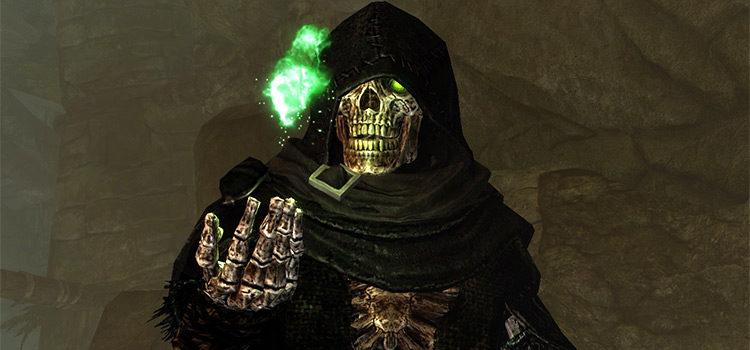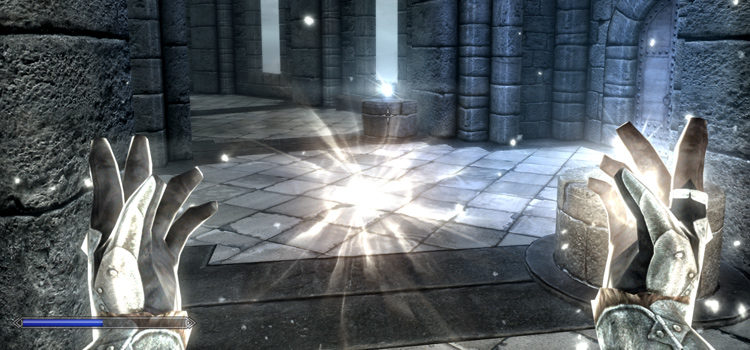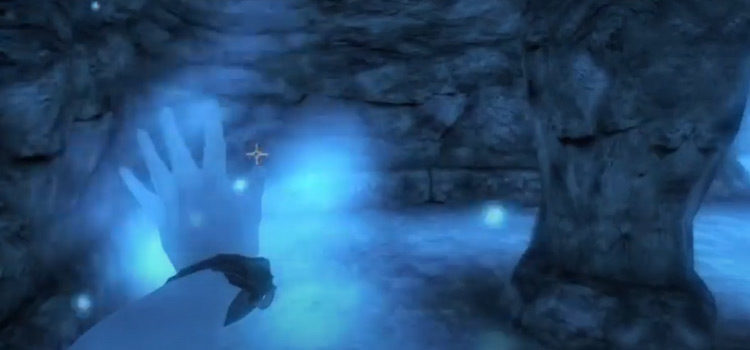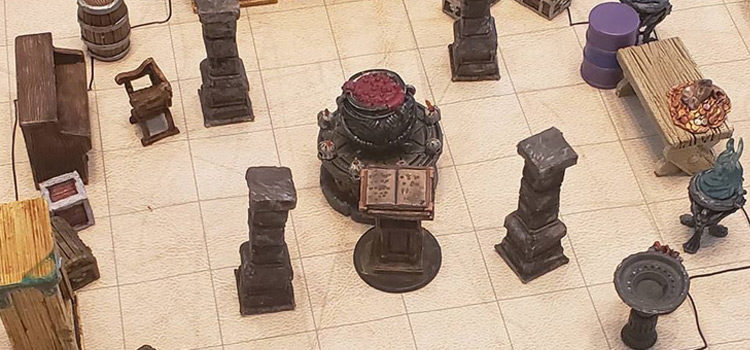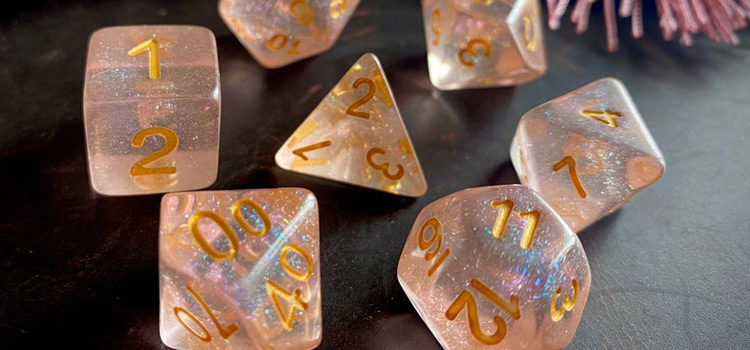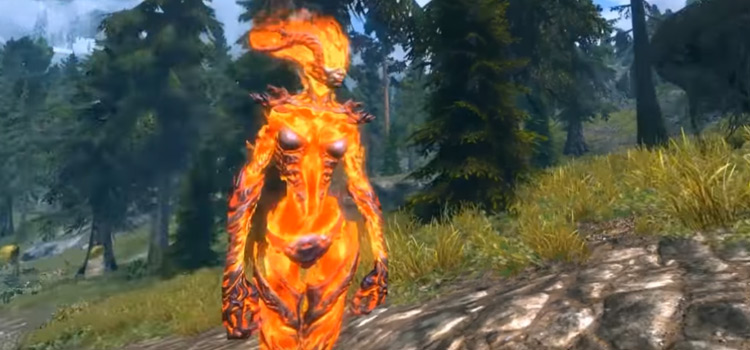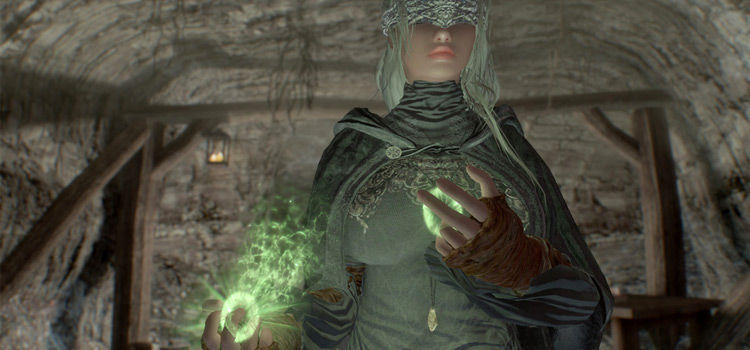20 Best Necromancy Spells For D&D 5e
This post may contain affiliate links. If you buy something we may get a small commission at no extra cost to you. (Learn more).
The darkest and foulest of magic available to spellcasters in Dungeons and Dragons.
Necromancy is by far my favorite school of magic, and it’s got some of the coolest spells in the game.
This school of magic offers high-damage spells, crowd-control, and the most important perk of all: zombies!
This list is ranked by my personal opinions for the spells in the Necromancy school, taking into account the following things:
- Price of components to cast the spell.
- Maximum damage or usability when the target succeeds their saving throw.
I chose not to include spells with expensive components (i.e. True Resurrection). These have been excluded due to their sheer cost to cast, where a lot of campaigns won’t let you get to that level of wealth. We’re also covering all of the current content in 5th Edition, excluding Icewind Dale, as it hasn’t been released at the time of writing this.
It’s also important to note that Constitution saving throws are the most frequent requirement for maximum damage for these spells. Constitution is the most frequent stat to have a bonus with, so it will be harder to reach maximum damage without some great rolls or strategic thinking.
20. Blindness/Deafness
Source: (Player’s Handbook p.219)
A very flexible debuff, you get to blind or deafen a target (or targets), which is pretty powerful for a 2nd level spell in early combat where you are very squishy.
At later levels, it can become less useful compared to other spells.
But it’s still got a spot in your toolkit.
19. Toll the Dead
Source: (Xanthar’s Guide to Everything p.169)
This little beauty is quite the cantrip, with increased damage if the target is missing any hit points, going from 1d8 to 1d12, and only scales as you level up.
It won’t break any records, but it’s consistent.
There isn’t too much to write home about this. But it does outclass the other damage based cantrip by offering a ranged option with higher damage.
18. Harm
Source: (Player’s Handbook p.249)
With a short and sweet name, Harm gets straight to the point with a big blast of damage (14d6), netting an average of 49 damage on a failed Constitution save, or half on a success.
In addition, the victim loses max HP equal to the amount of damage they take. Which helps against enemies that can heal.
The downsides of the spell are that it’s unable to kill targets (it can’t drop them below 1 hit point) and that it requires a save to reach its maximum potential.
17. Blight
Source: (Player’s Handbook p.219)
A pretty handy damaging spell for enemies that aren’t great with Constitution saves, Blight offers some fair damage as a 4th level spell with 8d8 and an average of 36 damage. And it only goes up by 1d8 for every spell slot beyond 4th level.
The fringe cases with instant killing non magical plants (or maximum damage plus disadvantage for magical ones) are pretty negligible, but overall it’s a good damaging spell.
16. Inflict Wounds
Source: (Player’s Handbook p.253)
The Yin to Cure Wound’s Yang, Inflict Wounds offers some pretty great damage as a first level spell (3d10 for a first level spell is pretty great), but it doesn’t offer any additional bonuses or debuffs.
As the game goes on you’ll be using this spell less frequently. But it’s a great spell until you get some of the big boys.
15. Vampiric Touch
Source: (Player’s Handbook p. 285)
Another iconic spell in a necromancer’s arsenal, Vampiric Touch lets you steal some life from an unfortunate person who happens to be in grabbing range.
Its damage isn’t anything to write home about (3d6 with an additional d6 per spell level beyond the 3rd).
But you get to heal for half the damage, as well as keep doing the same action without spending a spell slot (only your concentration and your action for the turn).
The downside is that it does require you to be in melee range, which is always dangerous for a spellcaster.
14. Eyeblight
Source: (Player’s Handbook p.238)
Eyeblight is a spooky spell, but very flexible for keeping enemies at by one of three conditions:
(1) making an enemy unconscious, making them flee in fear, and making them use the Dash action to do so, or making them sick and giving them disadvantages on all attack rolls and ability checks.
You only get to choose one affliction per target. But every turn you have a chance to spook another creature with your spooky shadow eyes.
13. Soul Cage
Source: (Xanthar’s Guide to Everything p.165)
Definitely one of the more bizarre spells in a spellcaster’s arsenal, Soul Cage lets you literally steal someone’s soul after they die.
After that, you get to abuse it for a while until you get bored or overwork it, which releases the victim’s soul.
This spell lets you choose one of four actions with the soul:
- Healing 2d8
- Asking it a question it must answer truthfully
- Giving yourself advantage on a roll
- Seeing a place it once saw in life for up to 10 minutes at a time
But once you activate it six times, the soul is released.
It’s a flexible tool to allow you to do some reconnaissance, getting your rolls to stick, or even a quick heal.
12. Revivify
Source: (Player’s Handbook p.272)
One of the few reanimation spells that made this list, Revivify offers a fast resurrection on a fresh body for a cheap price (Only 300gp worth of diamonds? I hope he went to Jared).
Plus the spell doesn’t give the caster any negative effects, unlike most other resurrection spells.
The downside is how fresh our target has to be. If they’ve been dead for over a minute the spell cannot be cast.
It’s handy in particularly dangerous combat encounters, giving your friends a one-time exception to that whole dying thing.
11. Animate Dead
Source: (Player’s Handbook p.212)
The iconic, classic necromancy spell.
It brings families together, it slays your enemies, it gets you one or more zombies or skeletons based on what your personal flavor is. And they can potentially last forever.
What’s not to like?
It scales well into the later levels, adding an additional two creatures per spell past the 3rd level.
The downside to this spell is that it must re-cast the spell every 24 hours, or you lose control of your new friend.
Maybe that’s why you always find random zombies running around in dungeons?
10. Bestow Curse
Source: (Player’s Handbook p.218)
Another incredibly flexible debuff, Bestow Curse lets you afflict your foe with one of four curses:
- Disadvantage on ability checks
- Attack rolls
- Potentially skipping it’s turn
- Or just additional damage when you hit them
The downsides to this spell are that it requires concentration. But as you spend higher spell slots that ends up as a non-issue.
9. Raise Dead
Source: (Player’s Handbook p.270)
The only other reanimation spell on our list, Raise Dead gives us a 10-day limit on our corpse.
A relatively cheap component (in comparison to higher level spells with pretty expensive diamonds), and only the target suffers any penalties.
8. Shadow of Moil
Source: (Xanthar’s Guide to Everything p.164)
Probably one of the cooler-looking spells in Dungeons and Dragons.
Shadow of Moil lets you surround yourself in shadowy flames for the edgiest of necromancers. It has some uses with turning dim light to darkness, and bright light to dim light, as well as resistance to radiant damage.
The real power of this spell is that you become so edgy you deal 2d8 damage to anyone who lands an attack on you.
It’s not exactly a super powerful spell. But it’s free damage if you’re in a pinch and can maintain concentration.
7. Clone
Source: (Player’s Handbook p.222)
Death is really optional after a certain point, right? In this case, the answer is yes.
Sure, the components might be expensive, with a 1,000 gp diamond, a 2,000 gp vessel, and a cubic inch of flesh is probably a little painful to remove.
But you also get a free re-do after a few months pass.
By the time you can cast 8th level spells this spell doesn’t seem too unreasonable. Plus it’s the closest you can get to being a lich-like being.
6. Contagion
Source: (Player’s Handbook p.227)
Necromancy’s most flexible crowd control spell, Contagion, allows you to inflict a target with one of six potent diseases that all bring their own sickening flavor of agony.
Each one targets a specific stat of the victim, giving them disadvantage in saving throws and ability checks, as well as a special additional affliction such as being blinded or losing all damage resistances.
The afflicted target has to make a Constitution saving throw at the end of its turns which breaks the spell with three successes, or makes the spell last the full seven-day duration if they fail three times.
The downside of this spell is that it can still be cured, since it’s treated as a natural disease.
5. Enervation
Source: (Xanthar’s Guide to Everything p.155)
Arguably the closest thing a necromancer will get to Witch Bolt, but at a higher price and a higher spell slot.
On the plus side, it offers damage whether or not they succeed the save (just half the damage), and it always heals you for half the damage dealt.
Witch Bolt still offers more damage (if cast at 5th, they get 5d12 to your 4d8, but they still need to roll to hit!)
But it’s a great tool in your arsenal nonetheless.
4. Negative Energy Flood
Source: (Xanthar’s Guide to Everything p.163)
Possibly one of my favorites on the list, this spell offers a whopping 5d12 damage (half on a successful save) and it gives you a free zombie if it kills the target!
That’s a great deal for a 5th level spell.
But the real kicker is this:
Negative Energy Flood never specifies how long this zombie lasts. Only that it pursues the closest creature it can see.
Sure, you can’t control it. But that’s a pretty broad loophole for you to jump in and terrorize a DM.
Why not let a single zombie wreak havoc?
3. Finger of Death
Source: (Player’s Handbook p.241)
Truly an iconic spell in D&D, this bad boy lets you blast a foe for a whopping 7d8 plus 30 more damage that ends up with an average of 61 damage per cast (or half on a successful Constitution save).
On top of that, if you just yeeted the life out of a humanoid creature with this spell, you get a permanent zombie under your control!
That’s right, no 24-hour recast or expensive components required. You get to act like Frank Reynolds and just keep blasting until you have an army of zombo’s.
2. Circle of Death
Source: (Player’s Handbook p.221)
This is the big boy of Area of Effect damage spells in a necromancer’s toolkit, allowing you to obliterate anything in a 60ft sphere for 8d6 necrotic damage.
It’s not a classic like Fireball… which, if you know about D&D game design, was a mistake in 5th Edition and WotC has acknowledged it.
But Circle of Death does offer triple the radius compared to its fiery cousin. Additionally, it scales a little better with higher spell slots adding 2d6 damage over Fireball’s 1d6.
1. Danse Macabre
Source: (Xanthar’s Guide to Everything p.153)
My all-time favorite Necromancy spell in 5e, Danse Macabre has to be one of the best spells available.
Not only do you get to reanimate up to 5 small or medium creatures as either zombies or skeletons, but they get bonuses to their attacks & damage based on your spellcasting ability modifier.
On top of that, you get an extra 2 zombo’s for each spell slot beyond the 5th level. This gives you a maximum of 13 zombies (it’s even a spooky number!) to wreak havoc for the next hour.
The downside is that timing, however. You only get an hour of undead rampage with your small Army of Darkness. So you have to make it count.
